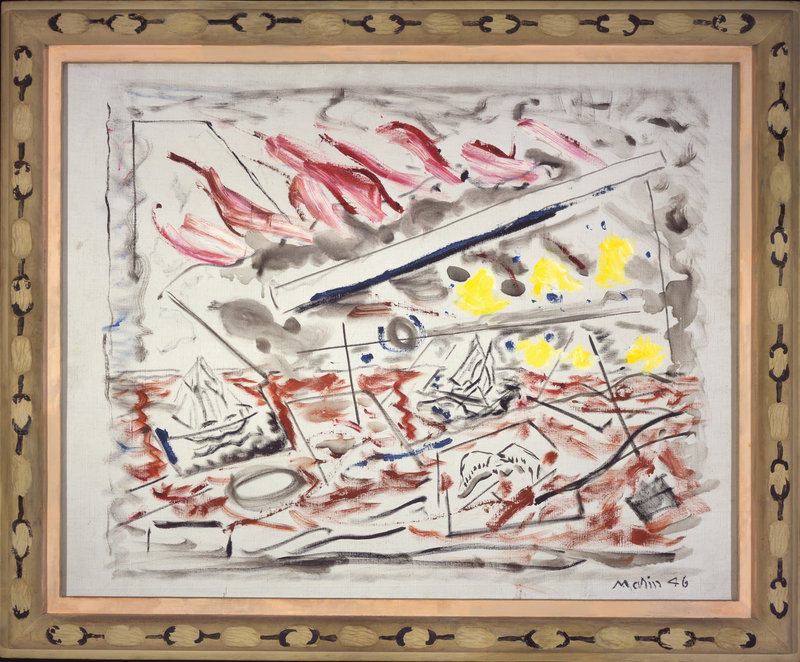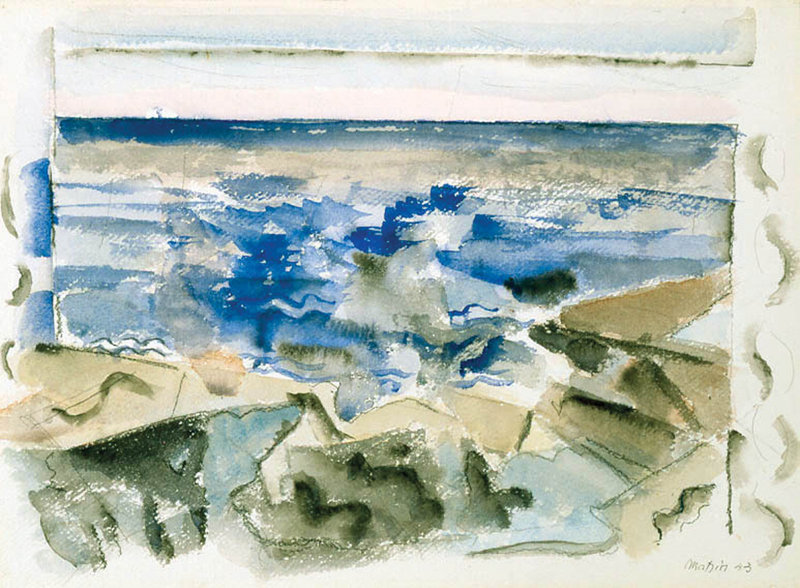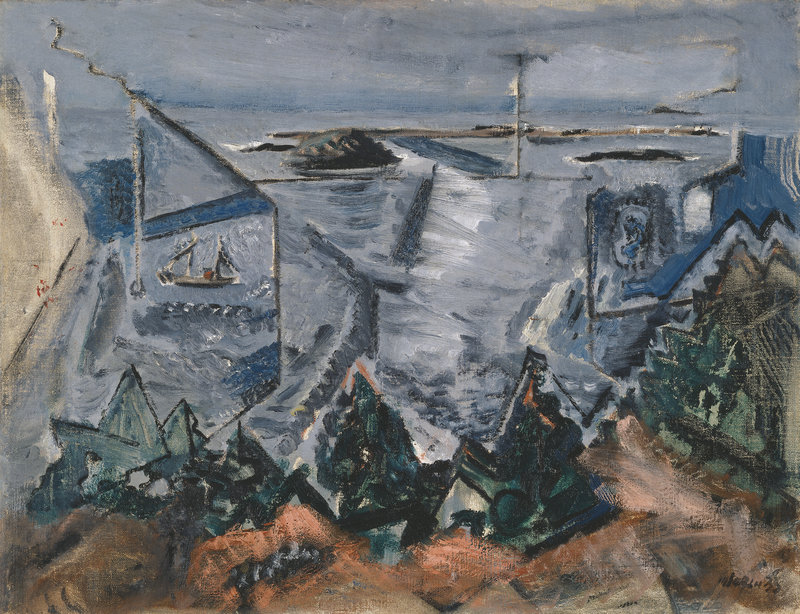In 1942, Clement Greenberg, the most influential art critic in American history, considered that John Marin (1870-1953) might be “the greatest living American painter.”
The Portland Museum of Art’s new exhibition “John Marin: Modernism at Midcentury” does more to buoy Greenberg’s comment than any exhibition in at least a generation.
In fact, this show is the most interesting, engaging and exciting exhibition I have seen anywhere in the last two years, bar none. It’s substantial, and it features much of the artist’s best work — in particular, many scrumptious morsels from private collections that rival or surpass Marin’s best-known works.
A potential blockbuster, this show focuses on Marin’s later paintings, when he largely shifted from watercolor to oils. It ranges from luscious homages to Winslow Homer to spare and sophisticated meditations on representation.
The real question is why the artist once polled as the most popular American painter is not still a superstar — but it’s probably due to his being misunderstood.
Although the curator, Debra Bricker Balken, deserves much credit for the show’s fantastic installation and slate of works, her essay in the exhibition catalog is disappointing, and at the same time reveals much about why Marin is misunderstood and consequently undervalued.
Balken complains that Greenberg doesn’t explain Marin’s work, yet she never bothers to give a reading of even one of his pieces. Considering Greenberg’s consistent commitment to formalism (organized appearance and structure) and essentialist notions of “painting” (a flat rectangle painted to reveal a shallow, “optical” visual space), his terms can be assumed.
It is Marin’s dedication to cubism that throws many people — because of the general confusion about cubism. We now too often think painterly style is about appearance rather than logic or meaning. Many people think cubism is merely about the fracturing of space, rather like crumpling a photograph and leaving the creases intact.
But the cubism of Picasso and Braque was an investigation of how meaning is conveyed in pictures — at first seeking the bare minimum of legibility and then conducting an encyclopedic search for possibilities.
Marin’s work is about the logic of drawing. Like early cubism, it is dedicated to legibility and economy. Like architectural drawing, it self-consciously reveals its assumptions and conventions.
Marin, after all, was an architect, so his training in watercolor and drawing was fundamental to his architectural education. His dedication to collecting and conveying visual information was natural. His re-dedication to cubism when switching from watercolor to oil also makes sense in light of cubism’s focus on drawing as a tool for conveying visual meaning.
There is a photo in the catalog of the Marin painting “Movement in Red” on Cape Split. The canvas is tilted far back on the easel, like an architectural drawing. The painting itself reveals the opposite of the idea of cubism as “fractured” space — two sailboats and other objects aren’t broken up, but rather compartmentalized in their own little frames.
The painting also reveals another vestige of architectural drawing: painted line margins near the edge of the canvas.
Framing is one of Marin’s most obvious idiosyncrasies. He carves and paints many of his picture frames. This gesture is easily understandable as an echo of the framing devices within the paintings, and as a literal reminder that you are looking at a work of art.
Marin’s early focus on framing devices, drawing logic and semiotics (sign and data systems) reminds us that gauging his importance requires historical context. It’s easy enough to enjoy his paintings, but his innovations and witty play were so prescient that his achievement is largely hidden in the wake of his own influence.
Marin suffered for the anti-European mood of postwar American culture because of his association with cubism. With the triumph of abstract expressionism, a generation of those who took from him (Tobey and Pollock among others) eclipsed their predecessor.
Because Marin’s work was about artistic representation, its intelligence is literally visual rather than theoretically verbal. Like his painter forebears — Picasso, Cezanne and Matisse — Marin’s genius wasn’t the stuff of tracts and treatises, and he was largely silent about his content.
While the Maine coast might seem an odd setting for such intellectual painting, Marin’s work was about seeing in the landscape — the experience of the human body in space. This bodily sense of perception was one of his most important gifts to Abstract Expressionism.
The sense of here and now, the brushwork geared to show off the qualities of the painted mark, the almost mystical literalism and the sense of play all remind us that Marin was the most important precursor to America’s greatest generation of painters.
“Modernism at Midcentury” makes the case that Marin was one of America’s best and most important painters. Don’t miss it.
Freelance writer Daniel Kany is an art historian who lives in Cumberland. He can be contacted at:
dankany@gmail.com
Send questions/comments to the editors.




